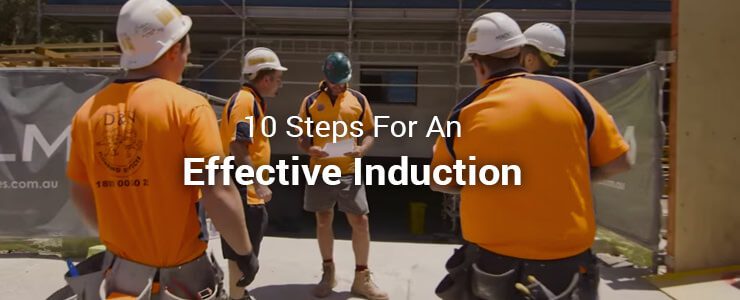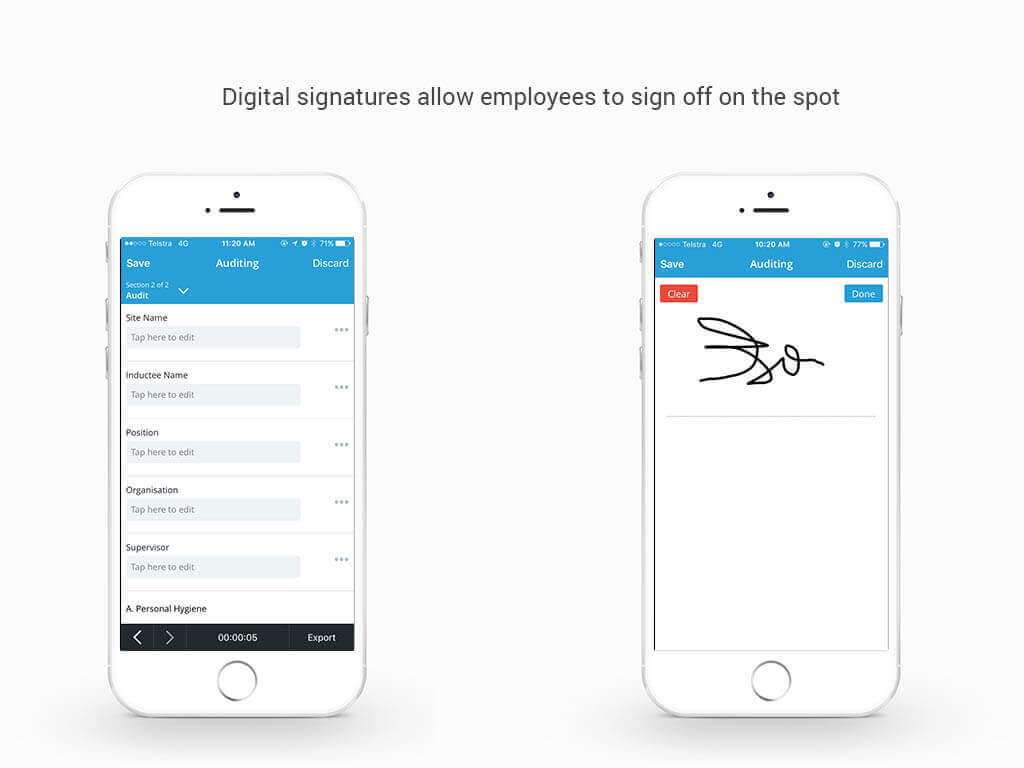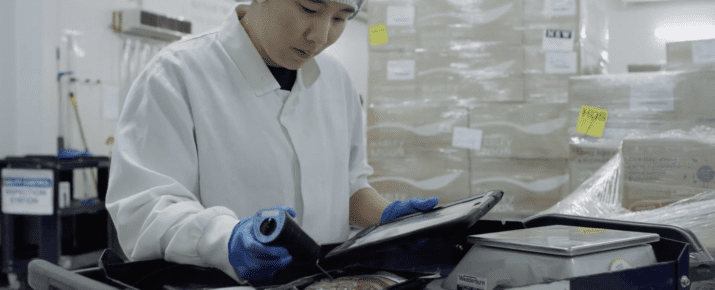10 Steps To An Effective Induction
Checklist Best Practices | By | 4 May 2016 | 3 minute read

When we start a new job, we all expect a certain level of training to set us up for success. The construction industry is no different, and an effective induction can mean the difference between a safe and hazardous worksite. A busy construction site can present many potential dangers and showing someone the ropes isn’t always enough to avoid tragedy.
A good site induction will ensure all workers can do their work safely, maximise site productivity, and also tick those regulatory boxes. In saying that, a bad induction can do more harm than good. So what makes for an effective site induction?
1. Create an induction optimised for how people learn
Whether your workers are visual, auditory or kinesthetic learners, a good site induction will cater for all three learning styles. 65 per cent of people are visual learners, according to the Social Science Research Network. Making it simple is great, but you can also make it entertaining. Let’s face it, health and safety isn’t always a hot topic to discuss. Create a site induction with graphics, multimedia, stories and examples. The human brain doesn’t remember facts, we remember concepts. Your workers are not going to remember the exact code or regulation, but they will remember what not to do if you share a good story and examples. Remember, it’s not a data dump or an indoctrination.
2. Cover all the hazards
Each construction site will come with unique challenges and risk. Put together a checklist of everything you need to cover, step them through the process of how they need to report an incident or potential risk. Have excellent reasons and examples as to why these regulations are in place. Make it short and sweet so your workers are likely to remember it.
3. Cover off on key safety personnel
Working with a bunch of strangers can mean teamwork can get left behind. Ensure your workers know who to go to if they have an issue. Aviation pilots work with virtual strangers every time they step into an aircraft, yet it doesn’t stop them from working as a crew and mitigating any risk that arises. Workers should also know basic emergency and first aid procedures.
4. Don’t turn it into a lecture
Acts and regulations can make for a dry read. There is no need, however, to do the opposite on the spectrum and dramatize the induction. Don’t tell war stories or scare your workers into doing the right thing. Treat your workers like adults and make it short and relevant. Use real life case studies that connect with participants.
5. Get moving in your induction
It is easy to stand there and deliver a talk. Why not make it a walking meeting, so you can familiarize your workers with the site as you talk. This TED Talk “Got a meeting? Take a walk” describes how walking meetings can have a big impact on your life and health. Walking also gets the brain active, it is easy to nod off when you are sitting down, particularly in the early hours of the morning when site inductions are typically held!
6. Focus the induction on the cause of incidents
Try to foster a team environment where people want to report errors instead of pointing blame. By focussing on the situations that cause incidents, like overconfidence, complacency, tick and flick, perception, rushing, misdirection and more, workers can look out for similar situations and stop it from occurring. Focus on decision making and trade offs in risk and encourage workers to be accountable and encouraging.
7. Ask open questions and seek engagement
People learn a little by listening and watching, but they can digest content a lot more if they have to repeat it. Enhance the site’s interactive content by presenting specific scenarios and empowering your workers to make decisions. This establishes understanding verbally and by observation. Invite your workers to tell a quick story or scenario of their own. Our brains are far more engaged by storytelling than a list of facts.
8. Have a set agenda
Everyone loves a meeting that finishes early. Keep your agenda and question time tight by having a timekeeper and meeting chair.
9. Build a digital template for your induction
SafetyCulture iAuditor allows you to build meeting templates. The templates are customisable with multimedia content. You can insert a video link, a diagram, pictures and helpful guidelines to show your workers best practices. Visuals add a component to your induction that text cannot: speed. According to research compiled by 3M, the organization behind Post-it Notes, visuals are processed 60,000 times faster than text.
10. Circle back and ensure everyone understands
Inductions can be overwhelming so it is important to ensure your workers understand the content you have presented. Get everyone to sign off on your induction using the SafetyCulture iAuditor app digital signature feature. Use your finger to sign off on the induction, with an electronic record of the signature. Accountability is key to a safe and quality workplace.
Important Notice
The information contained in this article is general in nature and you should consider whether the information is appropriate to your specific needs. Legal and other matters referred to in this article are based on our interpretation of laws existing at the time and should not be relied on in place of professional advice. We are not responsible for the content of any site owned by a third party that may be linked to this article. SafetyCulture disclaims all liability (except for any liability which by law cannot be excluded) for any error, inaccuracy, or omission from the information contained in this article, any site linked to this article, and any loss or damage suffered by any person directly or indirectly through relying on this information.






